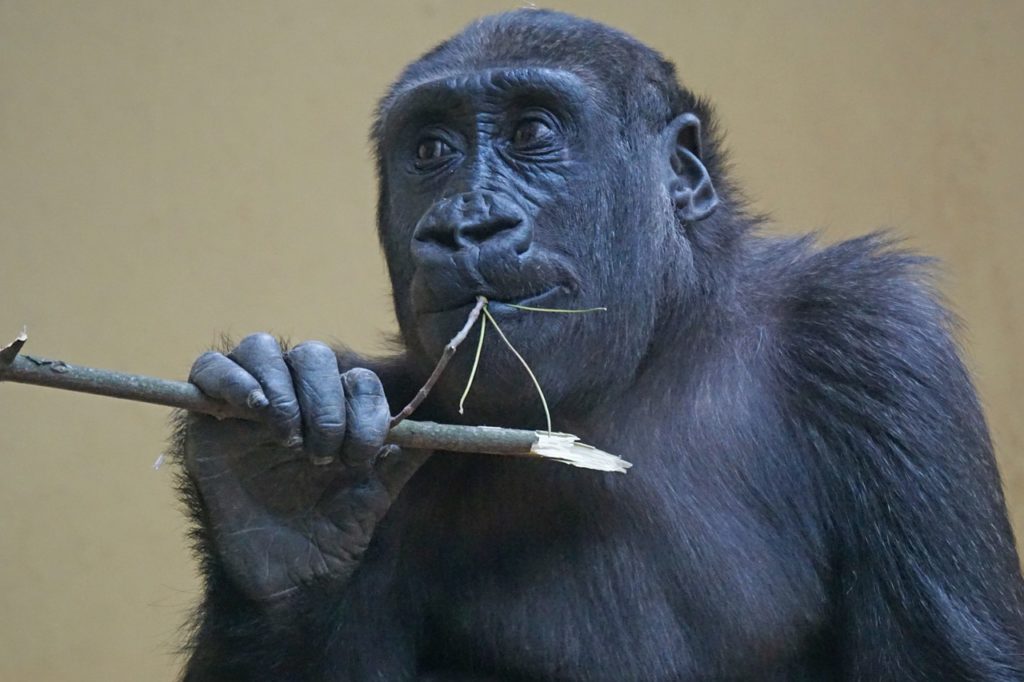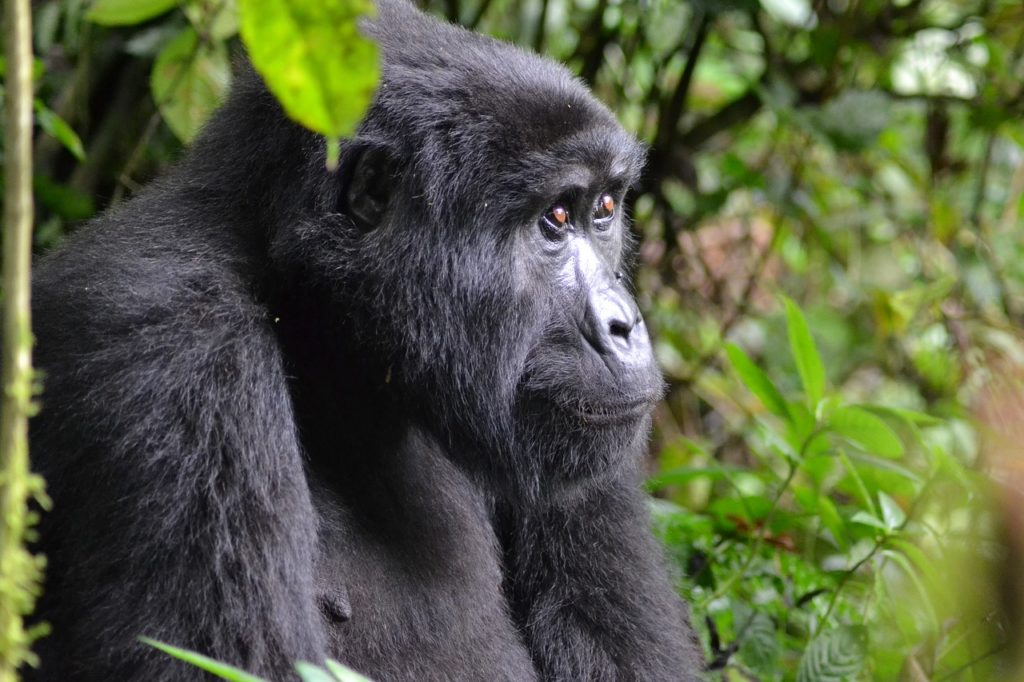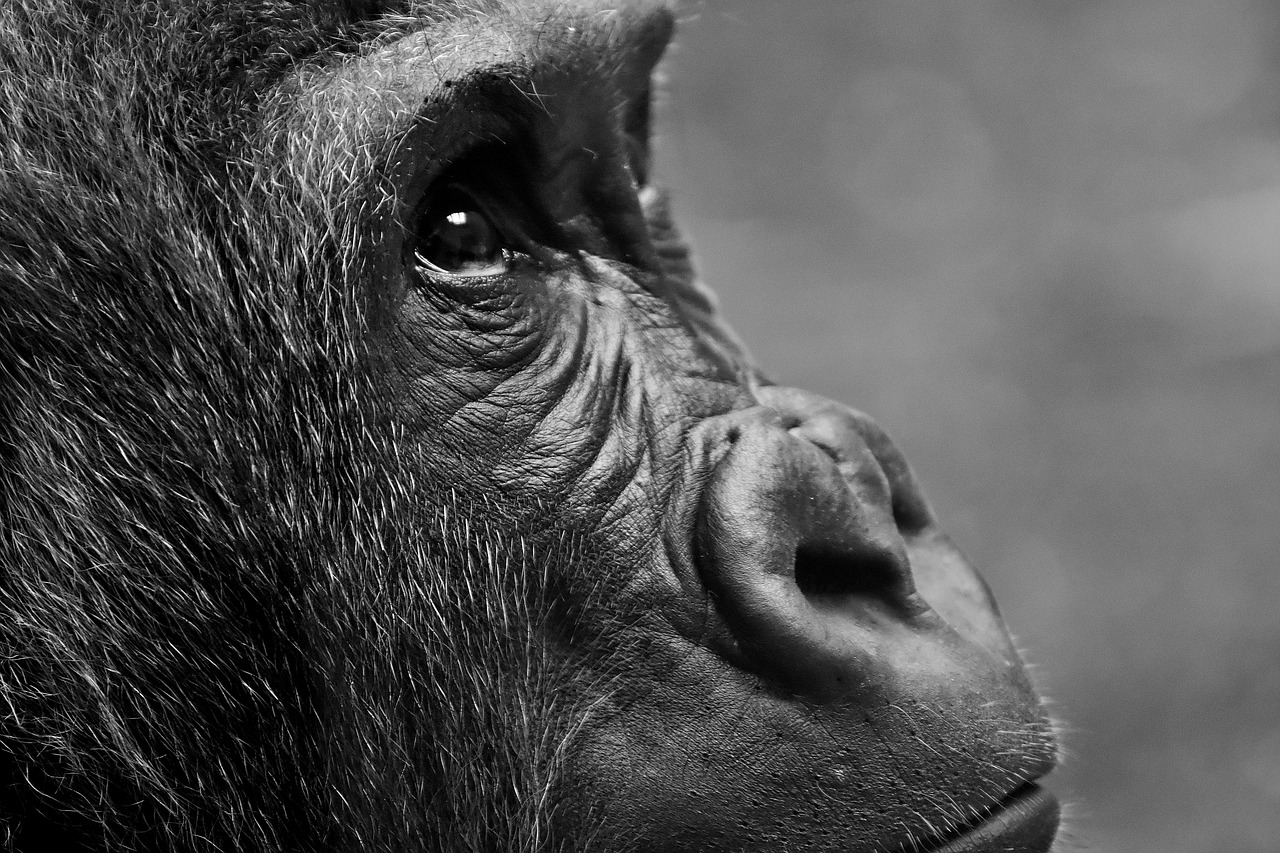There are only two species of gorillas known to humankind, the eastern and the western gorilla. They live along Africa’s equatorial belt about 500 miles apart. Each of these two species consists of two subspecies, one inhabiting lowland areas and the other inhabiting uplands and mountainous areas.
The Western Lowland gorilla and the Cross River gorilla make up the two subspecies of the western gorilla species. The Eastern Lowland gorilla and the Mountain gorilla are the two eastern gorilla subspecies. These four types of gorillas are closely related and share a number of physical characteristics, with the only marked differences being in nose size and in the type of sounds they produce.
But what these four gorilla types share goes beyond genetic commonalities. All are currently considered endangered by scientists. The International Union for Conservation of Nature (IUCN) publishes its widely respected Red List to document species currently threatened or endangered according to detailed scientific criteria. The IUCN’s reporting shows that both the eastern and the western species of gorilla continue to experience an ongoing threat to their population numbers.
1. The Western Lowland Gorilla
The Western Lowland gorilla, whose scientific name is actually Gorilla gorilla gorilla, is today the most widely scattered geographically among the four subspecies. It lives across the broad lowland forests and basins of the Democratic Republic of the Congo, the Central African Republic, Cameroon, Equatorial Guinea, and other west-central African countries. It is also the subspecies with the strongest population numbers.

But despite its relatively wide range and larger numbers—possibly 100,000 individuals—it is still critically endangered. The spread of disease and poaching have caused its numbers to decrease over the past quarter-century by about 60 percent. Even if all outside threats disappeared tomorrow, scientists estimate that it would take nearly a century for Western Lowland gorillas to recoup this loss in population.
Western Lowland gorillas tend to be smaller than their relatives, and to have auburn chest fur and greyish-brown coats. Their skulls are broader and their ears smaller. They also tend to behave less aggressively than other gorillas.
2. The Cross River Gorilla
Of all the gorilla subspecies, the Cross River gorilla faces the most imminent threat of extinction. At one point, in fact, it was thought to be extinct before being “rediscovered.”
The Cross River subspecies, scientific name Gorilla gorilla diehli, remained unknown to humans until the early 20th century. It exists today in a total population of an estimated few hundred, and is the rarest great ape species. It closely resembles its Western Lowland cousins, with only minor differences in the formation of teeth and skull.
The Cross River gorilla lives in areas where human populations continue to encroach on its habitat. People are cutting down trees and transforming the terrain into agricultural land. Organizations concerned with conservation of this species have focused on preserving its native forests as a habitat and refuge, since loss of habitat is the main factor in its dwindling numbers. The governments of Niger and Cameroon have attempted to assist by establishing a protected refuge for the gorillas that straddles the two nations’ borders.
Until only very recently, researchers had few ways of studying the Cross River gorilla. This was due to its avoidance of humans and the often-inaccessible lands in which it lives. The subspecies is divided into about a dozen groups across the rainforests and lowland forests in Niger and Cameroon.
3. The Eastern Lowland Gorilla
The Eastern Lowland gorilla, a subspecies of the eastern gorilla, lives largely in the tropical rainforest lands located in the eastern part of the Democratic Republic of Congo (DRC). The largest in size of the four subspecies of gorilla, the Eastern Lowland gorilla typically has a stockier build and a shorter muzzle than its relatives. Its diet, like that of other gorillas, tends toward fruit and other plant life. Also termed Grauer’s gorilla, the Eastern Lowland gorilla’s full scientific name is Gorilla beringei graueri.
Over the past half-century, according to researchers, the habitat of the Eastern Lowland gorilla has been diminished to almost half of what it was. Scientists believe that this gorilla’s current range (approximately 4,600 square miles) represents only about 13 percent of its historic territory.
Experts in primatology publish “Primates in Peril,” a biennial report that lists the 25 most endangered primates. The report’s 2016-2018 edition listed the Eastern Lowland gorilla, along with several species of lemur from Madagascar and the wild orangutans of Borneo.
Hunting by humans and the destruction of the species’ habitat in the war-ravaged DRC are considered to bear the largest share of responsibility for its decimation. Due to the consistent violence in the DRC, it is close to impossible to obtain an accurate count of the number of Eastern Lowland gorillas still living. Most authorities put their numbers at a few thousand.
4. The Mountain Gorilla

Mountain gorillas—scientific name Gorilla beringei beringei—are shy animals that can become demonstrably aggressive when they or their young are threatened. They live in traveling troops of a few dozen individuals, which are led by an older male. These older male gorillas are distinctive because of the “silverback” markings they develop with age.
Like its Eastern Lowland gorilla cousins, the Mountain gorilla lives in rainforest areas as well as along the forested slopes and grasslands of mountain peaks. Like the Eastern Lowland gorilla, the Mountain gorilla has seen its habitats threatened by the many years of war in the DRC. Today, the Mountain gorilla inhabits only a limited range in a few national parks centered on lands in Rwanda, the DRC, and Uganda.
It was the Mountain gorillas of the Virunga mountain range in Rwanda that endeared themselves to renowned primatologist Dian Fossey. As a result, she devoted her life to studying and protecting them. There are currently an estimated 1,000 or fewer Mountain gorillas in existence. Their habitats (swamps and rainforests, some of them quite isolated) include some of the most challenging environments for humans to navigate.
After conducting almost 20 years of research into the lives and behavior of Mountain gorillas at her Karisoke station in what is now Rwanda’s Volcanoes National Park, Dian Fossey was murdered in 1985. The brutal act was most likely committed by someone opposed to her work to end the poaching that was costing so many of the Mountain gorillas their lives.
Today, Fossey is remembered through a vibrant living tribute. The Dian Fossey Gorilla Fund International continues her in-depth research. The staff of its Karisoke Research Center conducts regular forest patrols to check on the health of local gorillas and bring help to those that have been injured. The Fund’s conservation work involving local human communities is also notable for its focus on preserving entire ecosystems for the long-term wellbeing of both animals and humans.
In 1996, the IUCN listed this subspecies as critically endangered. As of November 2018, its status has been upgraded from “critically endangered” to simply “endangered.” Thanks to the work of the Gorilla Fund and other protectors, the Mountain gorilla has been the only great ape species whose numbers have actually begun to increase in recent years.

